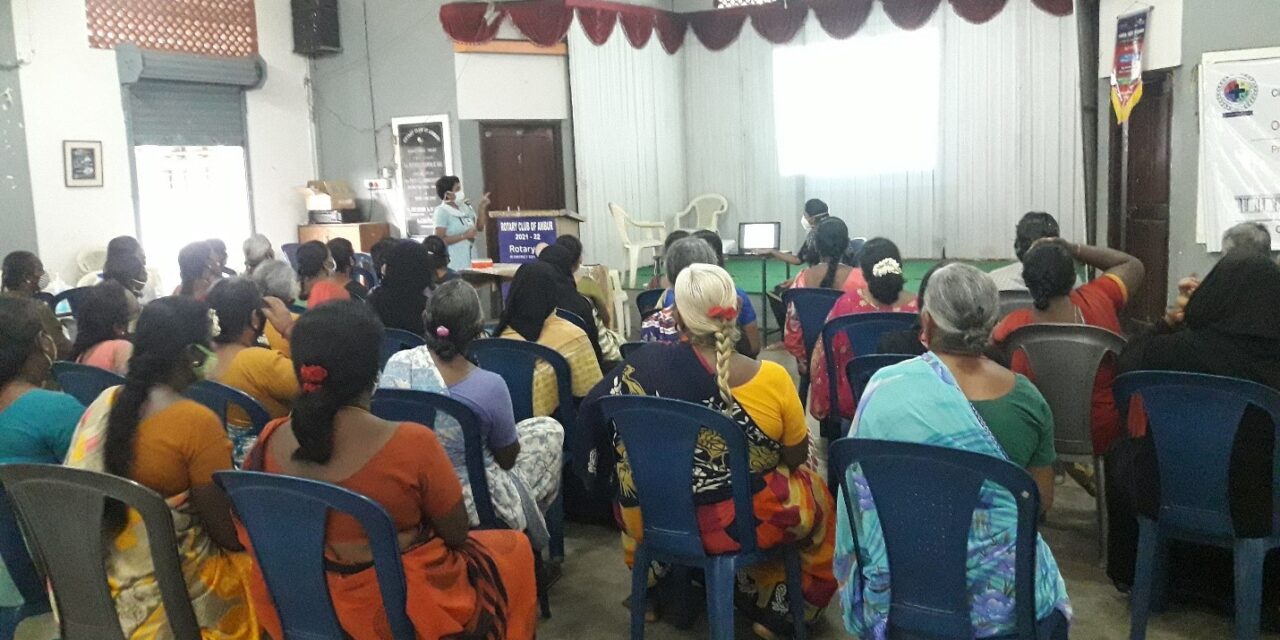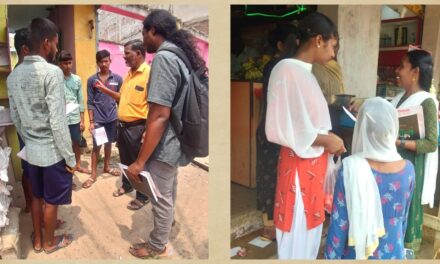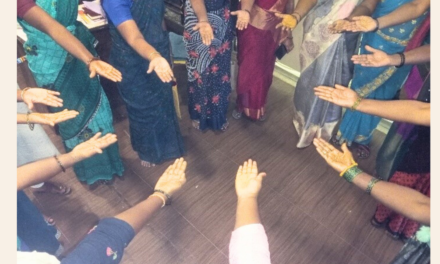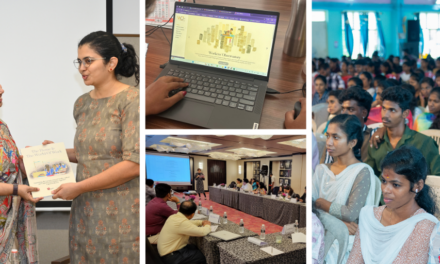Problems Linked To Lack Of Recognition Of Workers In Global Supply Chains
Although there is no data available on the exact number of homeworkers in the leather manufacturing hub of Ambur, Tamil Nadu, our field surveys estimate that there are more than 10,000 women, largely hailing from socially and economically backward communities in the region. As their homes are their workplaces, they lack health and safety equipment, and are not aware of occupational health and safety (OHS) risks, rendering them doubly vulnerable.
In order to assess the impact of the risks faced by homeworkers, Cividep India, in collaboration with Traidcraft and Homeworkers Worldwide (HWW), conducted an OHS workshop and a health screening session in October 2021. It was organised in partnership with the Department of Clinical Toxicology and Occupational Health Unit of Christian Medical College (CMC), Vellore. The main aim was to create awareness of risks, understand the OHS concerns of workers through body-mapping exercise, reduce the impact of occupational health hazards through basic exercises, and assess their general health status.
After a general introduction to OHS issues faced by informal workers in India, the participants were divided into five groups. They were assigned specific topics ranging from body mapping to understanding physical and mental health concerns; work-related accidents and harassment; grievance mechanism and access to remedy; common diseases and access to healthcare facilities; and community mapping of social services. Following this, the doctors conducted a general medical examination of the BMI, blood pressure, and blood sugar levels of participants. Some dermatological (skin allergies and so on) and orthopedic (musculoskeletal) concerns of workers were also addressed.
 More Cases of Musculoskeletal Disorders
More Cases of Musculoskeletal Disorders
These revealed that homebased workers suffer from severe musculoskeletal disorder(s) (MSD), one of the prominent occupational health diseases, affecting workers across many sectors including garments, footwear, and construction. Women who hand-stitch leather-uppers experience shoulder, chest, neck, back, hips, and knee pain. It is a skilled process that involves jointly holding the two parts of a leather piece in the correct position and inserting the needle with force from one side on the pre-punched holes, and pulling the needle with the thread from the other side with the right stiffness. The strenuous work along with household care and other duties takes a toll on women’s bodies. Studies point out that women suffer more from musculoskeletal disorders because of paid and unpaid work responsibilities.
Other health problems that workers face include conditions such as hair loss, headache, poor eye-sight, eye irritation, and reproductive health concerns including irregular menstrual cycles. They work seated on the floor in a bent posture without taking many breaks in between. This monotony and pressure cause breathing difficulties. Continuous use of needles causes hand injuries and potential swelling if unaddressed. Moreover, these women are also subject to violence and harassment at home during peak production periods because of extra time spent meeting production demands. The fear of losing work forces them to work at the cost of disregarding their health. Mental health problems such as stress, anger, distress, etc. are also common.
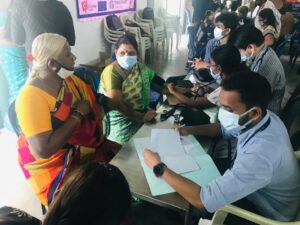
The medical examination also revealed lifestyle diseases such as obesity, diabetes, and systemic hypertension affecting workers. As per health experts, one of the major causes of obesity is a poor diet comprising high-calorie food. Home-based workers earn a daily income of INR ₹50 to 100. This is less than the daily minimum basic wage of INR ₹186 fixed by the state government for unskilled workers (although homeworkers are not covered under this category) in the leather footwear sector in Ambur. They hence cannot afford a nutritious diet for their households and largely consume rice with very small portions of vegetables. Eggs, meat, fish, fruits, and other protein-rich food are rarely consumed. Moreover, workers shared that they had no work for almost 18 months after the first lockdown in 2020. Pushed into extreme poverty, they had to solely consume poor-quality grains. Medical research reveals that long-term obesity is connected to diabetes, hypertension, or both.
Recognise Homeworkers in Leather
Thus, the precarious nature of their work and their ability to effectively cope with its associated health risks are affected by many interconnected factors, especially working conditions and wages. As the most important step, both governments, and global brands should legally recognize home-based workers on par with factory workers so they are ensured minimum wages, social security, and access to remedy. They play a vital role in the supply chain by doing the labor-intensive work outsourced by factories because certain styles of shoe-uppers need to be exclusively hand-stitched.
Where India is concerned, about 90 percent of its workforce comprises informal and unorganized workers with negligible or non-existing social security. In this context, the plan to cover previously excluded unorganized workers under the ambit of the Code on Social Security 2020, is a welcome step. However, the code hasn’t yet provided clarity on relevant schemes for unorganized workers and their implementation. The e-SHRAM portal launched by the central government in 2021, as a national database and delivery mechanism for social security benefits of and for unorganized workers, has no data sharing arrangement with existing state-run welfare boards. And the question of whether existing state government-provided schemes will continue remains.
Nevertheless, global brands have the power to close existing gaps. The United Nations Guiding Principles (UNGPs) on business and human rights require businesses to identify, prevent and remediate human rights risks in their entire supply chains. It requires that brands conduct more effective and transparent due-diligence processes that are not limited to the top-tier of supply chains. Effective due diligence should lead to actionable steps by the brands and their suppliers – such as mapping and publicly disclosing their entire supply chain all the way down to raw materials, setting fair piece rates, tracking work, wages and providing access to grievance redressal, and ensuring rights on par with formal workers.
Disclaimer: Cividep India takes no position on the diverse views presented in hyperlinked material within the article. The appearance of such links does not constitute an endorsement of the websites they lead to or the information contained therein, over which we exercise no editorial control.

